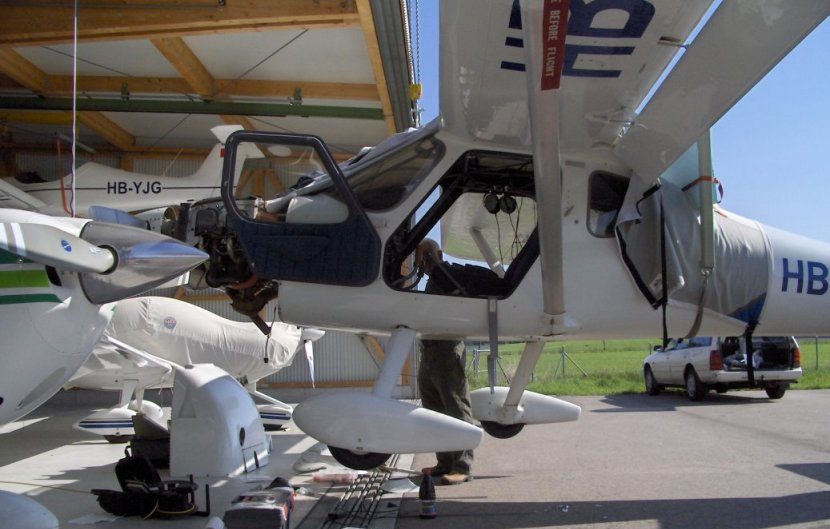Many builders have asked the question, “Trike or taildragger?” My short answer for them would be, “I would suggest you go with the trike, and if you desire the tail-dragger later, go for it then.” But every short answer implies that there is a long answer, too, which there is.

I have seen people with some experience in a taildragger have difficulty checking out in the GlaStar TD. (For that matter I’ve seen pilots have trouble checking out in the trike.) The trike is far easier to taxi, takeoff and land, in my opinion, than the tail-dragger. (The trike just doesn’t look as good , in some people’s opinion, as the tail-dragger) . You don’t need a tail wheel endorsement (U.S.) in your logbook for the trike and I suspect the insurance companies know something about accident/incident statistics. The floatplane is a trike (quad actually) while the skiplane is almost always a tail-dragger.
Some of you flying help me out here. It comes down to what’s important to you. The only apparent difference (other than looks) between the tail-dragger and the trike is ground operation. They fly the same except the tail wheel hook-up can add drag to your rudder system. If you use the 500×5 wheels and pants on both then the speed appears to be about equal.
The larger wheels and “unpanted” tires used on some taildraggers will slow the cruise by 5 (6.00 tires) to 8 (8.00 tires) to 20 or more (24″ tundra tires) knots.
On the ground
The tail-dragger’s rudder is 7′ high while the trike’s is 9′. In wing fold the tail-dragger’s rudder stays at 7′ while the trike settles to 6′. While the trike is higher to swing your foot into, you can use the tail-dragger’s empty gear socket for a simple streamlined step and make the trike a very easy airplane to get into for the vertically challenged folk. The baggage door is lower in the tail-dragger. You don’t need a tow bar for the tail-dragger. Pushing and steering it backwards is easy compared to trying to steer the trike backwards, and you must have a tow bar to keep the nose wheel straight. The trike is easier to pull forward and steer on hard surface; the taildragger must be steered from the rear. You need rear fuel drains in your wing aux tanks in the tail-dragger and centered fuel drains in the trike. (The main tanks were designed to have one drain cover both gear applications. Water getting into the fuselage runs out the tail in the tail-dragger but doesn’t all drain from the wing fold pans and can give your shoulders a surprise bath if you lift the tail high on the initial takeoff. The wheel pants on the tail-dragger get in your way more (stepping around them) and block a bit more vision while flying than the trike.
Taxi
Visibility is far better in the trike during taxi. They both turn as quickly on the ground, but the tail-dragger is better for soft snow, mud, large holes and rocks. The tail-dragger has more prop clearance than the trike. The trike’s stabilizer being higher gets less rock damage than the tail-dragger. Brakes are hardly needed in the tail-dragger because of tail wheel steering, but the rudder seems more effective in the trike. You’ll never have nosewheel shimmy or tear up a nose wheel pant in the taildragger.
Tail wheel shimmy doesn’t seem to be a problem with the Scott tail wheel.
Takeoff and landing
The trike is far simpler; point and shoot. By design and the laws of physics, the tail-dragger wants to swap ends while the trike prefers to stay the way it’s going. When is the last time you’ve flown in a conventional-geared airliner? Or seen the military use tail wheels? Only in special applications. Trike’s are generally the better way to go, until extreme surfaces come into play. The tail-dragger is safer/ better for huge rocks, deep holes, soft sand and stream beds.
I’ve yet to find maximum cross-wind component for the trike, while 25 knots or so appears to be limit for tail-dragger.
(Probably lower in both cases for most people —Editor) You can land as short in either, but the trike allows for more misjudgment of speed on the high side.
Sorry, didn’t mean to take so long. It’s interesting thinking about the differences and I’m sure I’ve not mentioned them all.
All of the above notwithstanding, Tim’s brand new ‘Star, N41TJ, is a tail-dragger, but he is looking at how to make the switch back and forth between that and trike in one hour.—Editor



